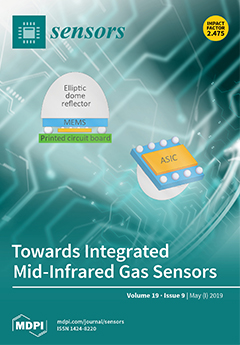Open AccessArticle
A Comparison Study of Fatigue Behavior of Hard and Soft Piezoelectric Single Crystal Macro-Fiber Composites for Vibration Energy Harvesting
by
Mahesh Peddigari, Ga-Yeon Kim, Chan Hee Park, Yuho Min, Jong-Woo Kim, Cheol-Woo Ahn, Jong-Jin Choi, Byung-Dong Hahn, Joon-Hwan Choi, Dong-Soo Park, Jae-Keun Hong, Jong-Taek Yeom, Kwi-Il Park, Dae-Yong Jeong, Woon-Ha Yoon, Jungho Ryu and Geon-Tae Hwang
Cited by 33 | Viewed by 4849
Abstract
Designing a piezoelectric energy harvester (PEH) with high power density and high fatigue resistance is essential for the successful replacement of the currently using batteries in structural health monitoring (SHM) systems. Among the various designs, the PEH comprising of a cantilever structure as
[...] Read more.
Designing a piezoelectric energy harvester (PEH) with high power density and high fatigue resistance is essential for the successful replacement of the currently using batteries in structural health monitoring (SHM) systems. Among the various designs, the PEH comprising of a cantilever structure as a passive layer and piezoelectric single crystal-based fiber composites (SFC) as an active layer showed excellent performance due to its high electromechanical properties and dynamic flexibilities that are suitable for low frequency vibrations. In the present study, an effort was made to investigate the reliable performance of hard and soft SFC based PEHs. The base acceleration of both PEHs is held at 7 m/s
2 and the frequency of excitation is tuned to their resonant frequency (
fr) and then the output power (
Prms) is monitored for 10
7 fatigue cycles. The effect of fatigue cycles on the output voltage, vibration displacement, dielectric, and ferroelectric properties of PEHs was analyzed. It was noticed that fatigue-induced performance degradation is more prominent in soft SFC-based PEH (SS-PEH) than in hard SFC-based PEH (HS-PEH). The HS-PEH showed a slight degradation in the output power due to a shift in
fr, however, no degradation in the maximum power was noticed, in fact, dielectric and ferroelectric properties were improved even after 10
7 vibration cycles. In this context, the present study provides a pathway to consider the fatigue life of piezoelectric material for the designing of PEH to be used at resonant conditions for long-term operation.
Full article
►▼
Show Figures






